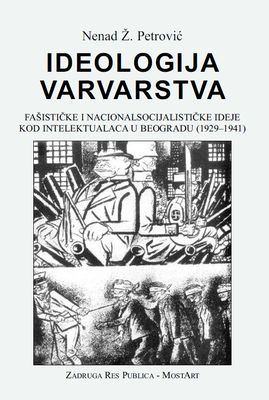
We kindly inform you that, as long as the subject affiliation of our 300.000+ articles is in progress, you might get unsufficient or no results on your third level or second level search. In this case, please broaden your search criteria.

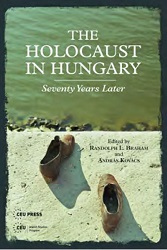
The Holocaust in Hungary represented a unique chapter in the singular history of the Final Solution of the “Jewish question” in Europe. In the fifth year of the Second World War Hungary still had a Jewish population of approximately 800,000.Although this large and relatively intact Jewish community was deprived of its basic rights as citizens, had suffered close to 62,000 casualties, had been confronted with the hardships of discrimination, and had endured the vicissitudes of a military-related labor service system, it continued to enjoy relative physical safety under the aristocratic-conservative regime of Hungary until the German occupation on March 19, 1944. How was all this possible? And if all this was possible until March 1944, why could it not continue for a few more months? Was it really inevitable that hundreds of thousands of Hungarian Jews would, within a few months, become victims of the gas chambers of Auschwitz? Could the Holocaust in Hungary have been averted and who were responsible for the violent deaths of over a half a million Hungarian Jews in the ghettos, on the deportation trains, in the extermination and concentration camps, during the death marches, and the mass shootings into the Danube? Starting from these difficult questions, the present volume offers readers the most recent scholarship on the history and memory of the Holocaust in Hungary.
More...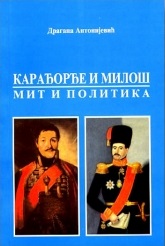
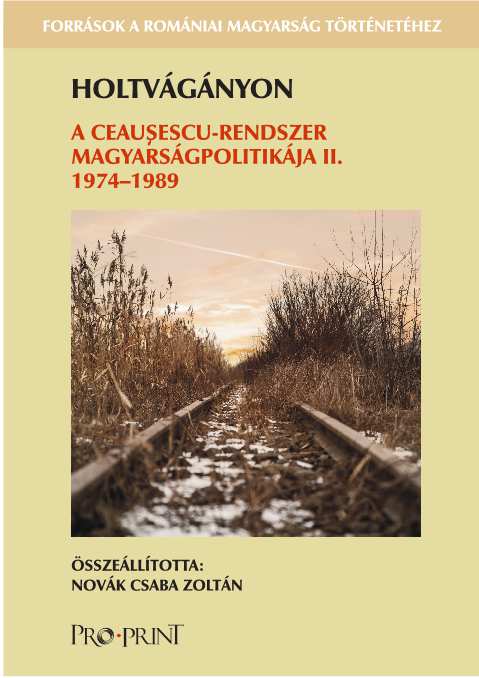
In the beginning of the 70’s and at the peak of his career, and having total control over society and its partial ’sympathy’, Nicolae Ceausescu began implementing his projects regarding the transformation of society, projects devised in the sixties. In 1971 the ’July Theses’ brought an increase in ideological strictness, while the following years have brought the changes: start of the territorial reorganization, increase of control over society, forced industrialization, and then economic restrictions. During the second half of the seventies, the general features of the Romanian political system are in place, and remain defining for political life until the change of regime in ’89. The Party leadership’s vision of the future has been defined by separatist foreign and economic policies, intensified industrialization and urbanization, refusal of political and economic structural reforms, construction of the homogenous society and nation, and last but not least total control over power concentrated around the General Secretary and his close entourage. The participation of society in political life became minimal, and the intertwining of state agencies with the Party evoked the Stalinist era of the fifties. The concentration of power, the fusion of state agencies with the Party were carried out on local levels as well. More and more key positions have been entrusted to the General Secretary’s relatives and family members, thus preventing the embodiment of an executive that could have opposed his decisions. The above mentioned economic and political changes have produced a visible transformation in the Party’s policy towards the ethnic Hungarian population. The relaxation of centre–periphery (Soviet Union – Eastern Bloc states) political relations within the Communist Bloc was used by Party leadership to redefine the country’s identity. The path of constructing the homogenous society and nation was openly adopted. By this time the Jewish population has already left Romania, while based on the agreements with the GFR, the German population was fleeing by the tens of thousands. According to the new interpretation, the ethnic minorities from Romania did not have the right to create national communities based on their own linguistic and cultural traditions, thus they did not become part of the Romanian socialist nation as a collective entity. Appeared new discriminatory laws: law on education, accommodation act, suppression of mother tongue usage in education and administration, removal of bilingual inscriptions, a visible emptying of content of the cultural products. Another clear sign of the radical changes in the policy towards nationalities was the gradual transformation of the activities of ethnic workers’ councils. At the beginning MNDT (Council of Ethnic Hungarian Workers’) or the other ethnic councils (German, Serb) also had a role of mediation between Party leadership and cultural elite. The new national political context has manifested by changing these council’s cadres, both on a central and local, county, level. Intellectuals that had defining roles in previous times and who in policies towards the nationalities have vehemently expressed their opinions, have now been overshadowed or changed. During these times, the state policy towards the ethnic Hungarians, the situation of the Hungarian population from Romania became the core of Hungarian–Romanian bilateral relations. Party leadership from Hungary, previously on a defensive position as far as its foreign policy was concerned, now due to the pressures from popular-traditional intellectuals and from the general public opinion, began to take this issue seriously, in a first phase on the level of the bilateral relations. In the beginning of the eighties the state was confronted with serious international economic and political challenges, to which the state should have responded in a flexible manner oriented towards reforms. The RCP’s leadership, purified from opposition, having total political and social control, has firmly rejected all initiatives of reform. This system with more and more prominent neo-Stalinist features, was helplessly drifting towards economic, political isolation, which it tried to counteract by nationalist, mass mobilisation and political-administrative measures. Due to the tensions it accumulated in its structures, during the eighties the Romanian economy was struck by a major crisis. The ethnic Hungarian activists and intellectuals that during the sixties still played major roles, have now gradually been removed from key positions of the state and Party apparatus, moreover they were classified as dangerous elements for national security. The MNDT has transformed into a propagandistic „speaking-tube” of the Party and was used by Party leadership for repelling criticism that targeted the policy towards the ethnic Hungarian population. The ethnic Hungarian’s political and cultural elite has reacted in different ways to the fact that Party leadership has egotistically closed down all channels of integration and have openly opted for an assimilation policy. Some members of the ’68 generation, an older generation that once was integrated into the political system and into the supporting cultural institutions, have openly condemned the Party leadership’s policy towards the ethnic Hungarian population. Others, however, have isolated themselves or have been removed from their positions, have left the country, refusing any further collaboration with the regime. There have also been individuals who for some reason,mostly personal, have kept their seats (especially in local administration, very few in central leading circles). The young generation, partially integrated into the cultural institutional network but not at all in the political structures, has realised that the system is impossible to reform. Lacking a national institutional network, during the second half of the seventies the activity of these individuals, groups was characterised by attempts of creating some sort of a framework of self-organisation. They have organised meetings at faculties, editorial offices, theatres, educational institutions, at first legally and then due to the harassment of the secret police, covertly. They have turned against the regime, criticising it. In 1989, when Communist Parties were falling all over Eastern Europe, in Romania the 14th Congress of the RCP was held. Similar to other regions from the country, Transylvania was confronted by an economic crisis, having serious problems with food and energy supplies, moreover towards the end of the year a total ideological stringency has been applied. The problems that had engulfed the whole country have only been aggravated by the changes that have occurred in matters of policy towards the ethnic minorities: institutions of the minorities have been stripped of all content and were intentionally weakened, significant repression of local ethnic Hungarian cadres, the effect of homogenisation, tangible pursuits of assimilation within educational institutions, nationalist stigmatisation of the ethnic communities etc. The minority society has been deprived of traditional representative institutions, and has only been kept together by informal networks, the Churches and groups of intellectuals who have spontaneously organised themselves on a local level. The ethnic Hungarians from Transylvania could only hope that the wind of change from Eastern Europe will sweep through Romania as well.
More...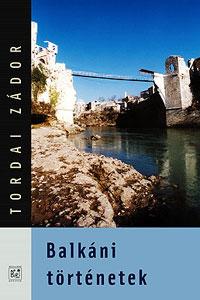
States do have their own order, as cities have their own order as well. And all of them have backyards. You put everything in the backyard –according to the common sense, untidy and immoral -what does not fit into the general order, and in particular everything that does not want to fit in that order. In Europe, almost all countries have such backyards. It is true, that they are isolated from each other. But Europe as a whole has also its own backyard, which you can put under the category “the Balkans”.
More...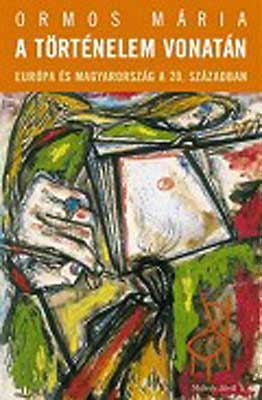
“The Train of History” by Mária Ormos invites the reader to two different „journeys”. Reception of both, history and historiography. It is a comprehensive study with author’s vision on Europe, focusing on the Hungarian history and Hungarian identity.
More...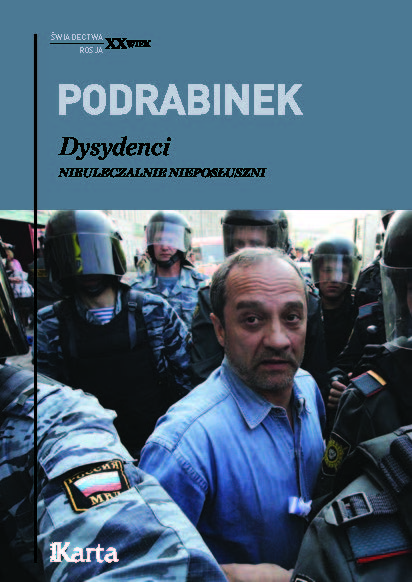
Książka Aleksandra Podrabinka nie jest zwykłą opowieścią biograficzną. To wciąż żywe i aktualne świadectwo odwagi i bezkompromisowości. Ta historia ma swój ciąg dalszy, jest obecna, dzieje się na naszych oczach. Ruch dysydencki, tak szczegółowo opisywanyprzez aktywnego uczestnika, nie jest epizodem w dziejach Związku Sowieckiego. Los Podrabinka to ilustracja fundamentalnego sporu: między ideologią kolektywizmu a cywilizacją judeochrześcijańską, w której człowiek stanowi podstawowy i najważniejszy punkt odniesienia.
More...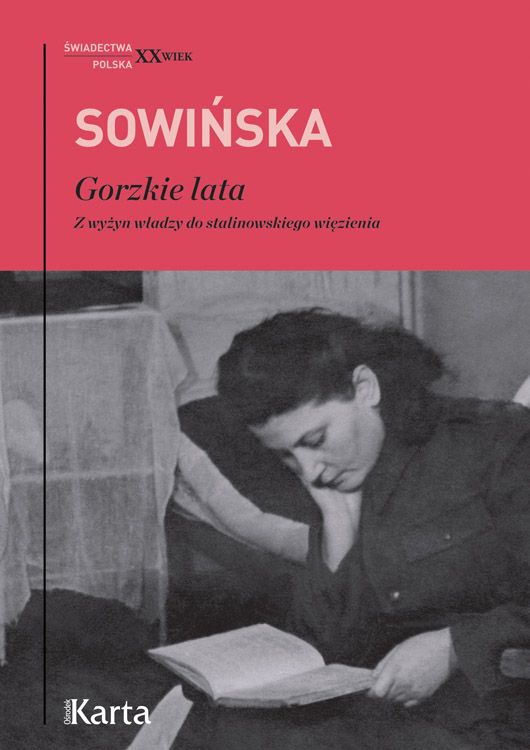
A pre-war communist is taken to a Stalinist prison as a victim of paranoid search for enemy within the party. Her moving story is a picture of an individual facing the criminal system and an accusation of totalitarianism.
More...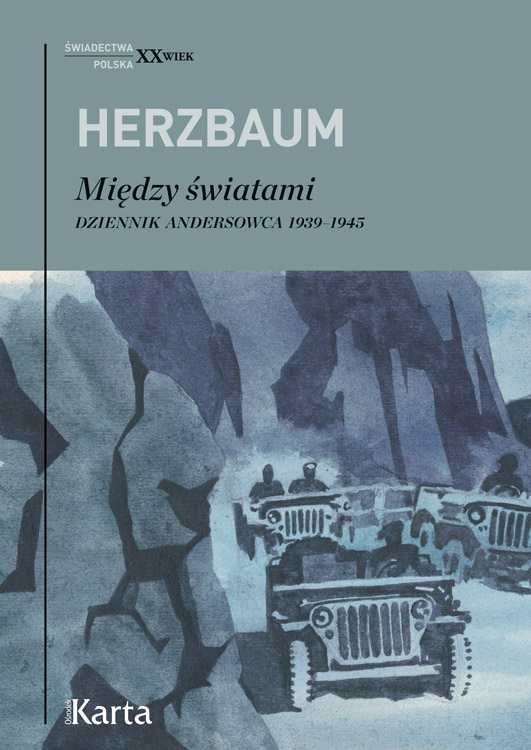
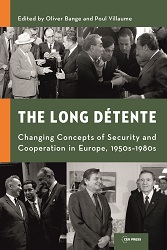
The present volume presents a collection of pieces of evidence, which—taken together—lead to an argument that goes against the grain of the established Cold War narrative. The argument is that a “long détente” existed between East and West from the 1950s to the 1980s, that it existed and lasted for good (economic, national security, societal) reasons, and that it had a profound impact on the eventual outcome of the conflict between East and West and the quintessentially peaceful framework in which this “endgame” was played.By offering new, Euro-centered narratives that include both West and East European perspectives, the combined contributions of this volume point to critical inconsistencies and inherent problems in the traditional U.S.-dominated narrative of the “Victory in the Cold War.” Yet, rather than aiming at replacing this understanding entirely, the argument of a “long détente” demonstrates that this superpower narrative can, and needs to be, augmented with the plentitude of European experiences and perceptions. After all, it was Europe—its peoples, societies, and states—that stood both at the ideological and military frontline of the conflict between East and West, and it was here that the struggle between liberalism and communism was eventually decided.
More...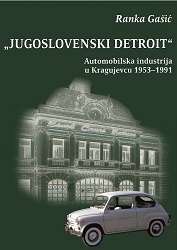
The automobile industry in Yugoslavia started in 1954 at the Crvena zastava factory in Kragujevac. A year before that, the workers` council at the former armament factory voted for introducing cars into their production. The licence was purchased from FIAT in 1954, and a small FIAT vehicle (fiat 600) was assembled at the small range. The new automobile factory was built with the start-up investment of 30 million dollars by FIAT in 1962, for the yearly output of 32 000 cars. It was soon rebuilt and expanded its capacity for the output of 82 000. That marked the beginning of the large scale automobile industry in Yugoslavia. Cars, especially the small-engine ones, were in high demand in the 1960s, but due to the small purchasing power of the Yugoslav population, they were mostly sold on credit. The most popular was "zastava 750", in production for the next 30 years. The Crvena zastava car factory started exporting its products in the early 1960s.
More...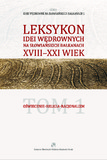
The first volume of the extensive (ten-volume) monograph by Polish Slavic studies scholars (with contributions from scholars from a number of foreign research centres), made possible by an NCN OPUS grant (2014/13/B/HS2/01057). In terms of form, the monograph is a lexicon, the main body of which consists of entries-articles on the history of 27 selected ideas that anticipated and shaped the processes of modernization in the region: agrarianism , anarchism, evolution, humanism, history, capitalism, clericalization , confessions, conservatism, education, culture, liberalism, nation, modernity, homeland, schooling, enlightenment, politics, progress, rationalism, reformation, religion, revolution, secularization , socialism, tradition, and universalism. Their semantics, changeable as it was in response to local conditions, was investigated separately for each of the seven current states of the southern Slavdom: Bosnia and Herzegovina, Bulgaria, Croatia, Montenegro, Macedonia, Serbia, and Slovenia. Volume 1 presents the three ideas - enlightenment, religion and rationalism - that are at the foundations of the European discourses of modernization and anti-modernization. The book contains many synthetically expressed original and source-based insights of the scholars on the southern Slavic cultures’ struggles with modernity.
More...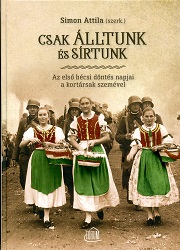
This book describes the daily life in southern Slovakia in the period of the decision made on the First Vienna Award and of its enforcement as reflected in contemporary texts (diaries, memoirs) and photographs. The volume contains 19 texts and is illustrated by about 180 photos reporting on the processes taking place in southern Slovakia in the autumn of 1938. These mainly reveal pre-war tention in the first days of the Munich Agreement, the expectations surrounding the Hungarian–Slovak border talks, and the delight of the Hungarian population living here over return to Hungary.
More...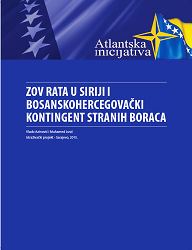
Povratnici s ratišta u Siriji i Iraku – iskušani u borbama, vješti u rukovanju oružjem i eksplozivom, i ideološki motivirani – općenito se smatraju izravnom prijetnjom ne samo po sigurnost Bosne i Hercegovine nego i po regionalnu i međunarodnu sigurnost jer se vjeruje da bi se nakon povratka u matičnu zemlju mogli priključiti već postojećim mrežama ideološki radikaliziranih osoba i zajednica ili uspostaviti nove. Smatra se također da bi se takve osobe mogle angažirati u procesu radikalizacije i vrbovanja novih boraca za sukobe u Siriji i Iraku ili da bi njihova znanja i iskustvo mogli biti privlačni nekoj od organiziranih kriminalnih skupina.
More...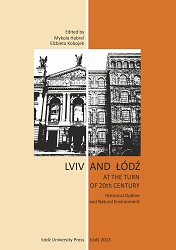
In this publication the attempt was undertaken to present the economic history, spatial development and contemporary image of two cities – Lviv and Łódź. Lviv is situated on an upland in the western part of Ukraine, and Łódź in a lowland area in the central part of Poland. In the interwar period Łódź was the second and Lviv the third biggest city of the Polish Republic. Currently, both cities have a similar number of inhabitants, but they differ substantially as regards the city area within administrative boundaries and average population density. Although so different in their historical course of development, both cities encounter at the moment many similar problems and challenges, facing the necessity to create their future prosperity exploiting their specific local potentials and to continue their best traditions of urban growth in all aspects – spatial, social, cultural and economic.
More...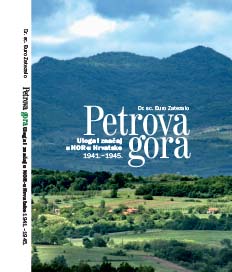
Kordun je područje oko rijeke Korane između Male Kapele na zapadu i Petrove gore na istoku. Ime je dobio prema francuskoj riječi cordon, što znači: vrpca, sistem, niz, red, stražarnica, granica. Cijeli Kordun gravitira prema Karlovcu. Zauzima područja bivših kotareva (srezova): Vojnić, Vrginmost i Slunj. To je veliki kraški ravnjak koji se odlikuje oblicima plitkog kraša s mnogobrojnim vrtačama i uvalama. U njegovom sjevernom dijelu se nalazi Petrova gora (507 n/m). Od Karlovca je udaljena 30 kilometara, okružena cestom Vojnić-Vrginmost-Topusko-Velika Kladuša-Krstinja-Vojnić. To je bjelogoričnom šumom obrasla površina od 10728 hektara. Njenu posebnu prirodnu vrijednost čine bistri žuboreći potoci, mnogobrojne duboko uvučene livade, pašnjaci, izvori dobre pitke vode i obilje šumskog cvijeća. Na svojim brežuljcima i uvalama ona krije 1700 grobova poginulih i umrlih partizanskih boraca NOR-a i 2504 žrtve ustaškog zločina genocida, bezbroj historijskih događaja, mnogo herojskih podviga, ljudskih sudbina, crnih marama i muka čudovišnih.
More...
Zločina i zločinaca uvijek je bilo, njih ima i danas i bit će ih sutra. To su neosporne činjenice s kojima čovjek današnjice računa kad živi i kad se priprema za budući život. U vrijeme kad smo na pragu postindustrijskog društva, kad strojevima dirigiranim sa zemlje čeprkamo po površinama dalekih nebeskih tijela, kad je čovjek uspješno koraknuo mjesečevim stijenama, kad osvajamo ono što je bilo i za maštu predaleko, na našoj planeti, tu gdje žive civilizirani narodi, prepuni su ambari opasnosti i stovarišta smrti. Čovjek očito, živeći u proturječnostima ideja i sistema, u različitim ekonomskim i društvenim uvjetima, nije siguran i mora stalno misliti otkud mu i kakva opasnost prijeti, tko će ga i kada napasti, kakve mu katastrofe sprema po svemu sličan čovjek‑brat, čovjek‑nebrat.
More...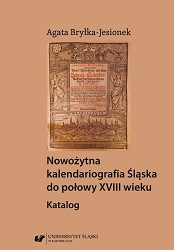
This work concerns the problem of modern Silesian calendariography. The choice of source material was determined by two factors: territorial and temporal. What is the subject matter of this work with reference to the territorial factor, are exclusively calendar publications issued in Silesian printing houses. They include the printing houses in the provinces of Wrocław, Legnica, Brzesko, Kłodzko, Nysa, Opava and Kożuchów. As to the chronological frame, it is determined by the date of the issue of the oldest Silesian calendar print that preserved to the present day. It is the year of 1562, when the Polish-language print entitled “Dzienne sprawy wedlie Niebieskich Biegow ná rok Panski. 1563 […]“ (“Daily matters according to Celestial Cycles for Anno Domini 1563 […]”), edited by Kacper Goski of Cracow. The final frames of this work are determined by the mid-eighteenth century, when significant changes of political character took place. They were a consequence of Silesia getting under Prussian rule resulting from the Peace Treaty of Berlin signed in 1742, which was reinforced three years later by the Peace Treaty in Dresden. This resulted in transformations in the field of legislation, which also had an impact on the calendar publishing market (the so-called Kalender- Patent issued by Frederick II). In total, 78 titles of calendar prints, which comprise 250 annuals, have been collected and cataloged. Despite the rudimentary state of preservation, it should be concluded that Silesian calendar publications were, to a large extent, periodic prints. They were issued mostly in German, occasionally also in Latin and Polish. Calendar publications were not only the effect of the work of their editors and publishers, they were also a specific manifestation of reading activity. Due to the notes made on their cards, their individuality and uniqueness were revealed. They became the trustees of the reader’s thoughts, and thus they played an important role in his/her life. Silesian calendar publications played an important role in the process of nowadays social communication. On their pages, since around the mid-seventeenth century, there had been presented texts reflecting the current state of knowledge in the fields of, among others, running a farm, geography, history, biology, medicine, chronology and astronomy. The aim of the editors was therefore not only to propagate knowledge of a practical nature, but also to expand the readers’ cognitive horizons and satisfy their inquisitiveness about the surrounding world. Reading the calendar printing was also supposed to provide entertainment. The texts published on the calendar pages give evidence of a considerable knowledge of the latest research results, since there were presented the views of well-known and respected, both ancient and modern, authorities. They were also often accompanied by the editors’ own reflections and observations. The calendar publications we are interested in may serve as a kind of measure of ideological changes within communities living in the area of Silesia. Therefore, they can be considered as a manifestation of the changes in the outlooks on life characteristic for a given epoch. The presence of astrological contents in calendar publications may be associated with manifestations of Renaissance thought, and the overabundance of them seems to be close to the ideas of the Baroque era. The face of this type of prints underwent far-reaching transformations in the 18th century, along with the movement of the Enlightenment, since at this time, alongside prints of astrological character, there were also those containing information about everyday life. In this way, calendar publications tried to meet the needs of the reader, thus becoming a kind of ‘mirror’ of social tendencies. They were also to perform the propaganda function, to integrate the circle of recipients around certain ideas and preferred values. The modern calendariography of Silesia is a manifestation of certain trends and fashions functioning within the contemporary society, which is indicated by a comparative analysis of Silesian calendar publications and the ones issued in other typographic centres. The thematic scope of calendariography of particular epochs may be evidence not only of ideological influences, but also of the then mentality within a given society. The texts placed in the calendar publications were, to some extent, to satisfy the needs of an average reader, which undoubtedly was vital to the commercial success of particular titles. These publications played an integrating role, as they were addressed to a wide range of recipients. Within their framework, the first manifestations of democracy and the formation of a civil society may be observed.
More...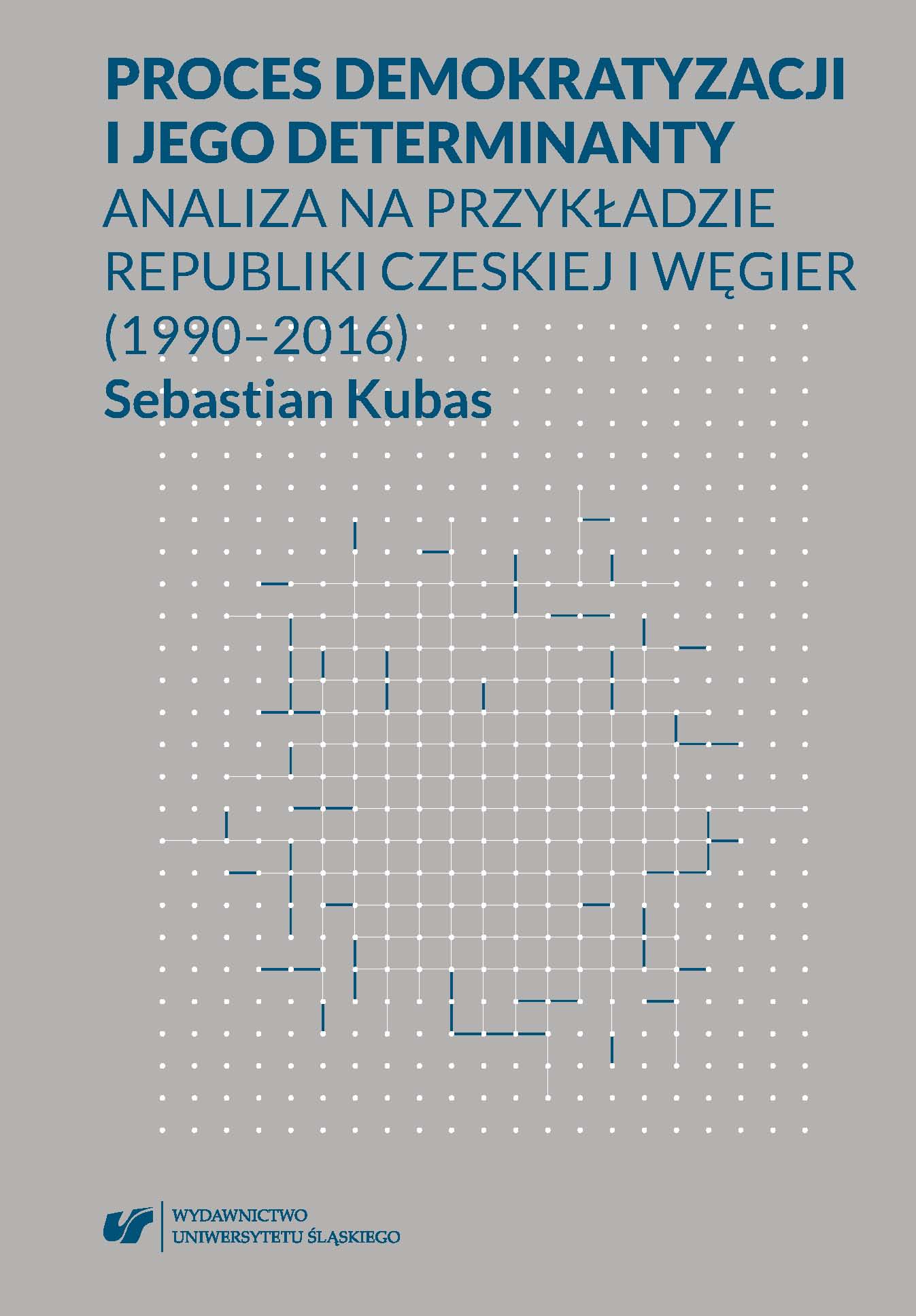
This study is concerned with an analysis of the democratisation processes in two Central European states: the Czech Republic and Hungary in the years 1990–2016. It consists of two parts, with the first one presenting a theoretical analysis of the phenomenon of democracy, the process of democratisation, and the determinants of this process, and the second one focusing on the empirical analysis of the democratisation processes in the Czech Republic and Hungary. Today democracy means that almost all adult citizens participate in the exercising of power. In substantive terms, democracy relies on freedom, equality, and majority rule. At the same time, it is also a regime that rests on specific principles and procedures (the procedural perspective). The process of consolidating democratic values and procedures goes through various stages. First, the erosion of a non-democratic regime involves the transfer of power from former elites to new political actors. Next, during the transition stage, the democratic institutional design is introduced into the political system. Finally, during the consolidation stage, the democratic principles of political life become well-established and democratic values accepted and internalized by the society. The most important determinants of the stage of erosion include: the heritage of the past and the influence of the surroundings. The transition is determined by: the structure of the state, national identity, political elites’ work on the constitution, the relationship between the organs of government, the party system, the electoral system, lustration, decentralisation of power to a system of local authorities, and external factors. The consolidation stage depends on institutional factors on the one hand. such as the final design of the constitution, a stable model of relations between the organs of government, the development of a pluralistic party system, and solidification of the electoral system, and on behavioural factors on the other, such as acceptance and internalisation of democratic values by the society. The process of democratization can be analysed and evaluated with the use of quantitative and qualitative indicators. This study employs indices used by Freedom House, The Economist Intelligence Unit, and The Bertelsmann Foundation.The erosion of the non-democratic regime in Czechoslovakia and Hungary was marked by the transfer of power from political elites to democratic actors. In Hungary, this process was accomplished by negotiations, leading to an agreement signed in the autumn of 1989; in Czechoslovakia, it resulted from the inefficient political elites surrendering the control of the country. The fall of the regime was non-violent. In the initial phase of democratisation, the Czechs could draw on richer experience and more substantial democratic achievements than the Hungarians.During the transition stage, various contributing factors not always influenced the Czech and Hungarian processes of democratisation in the same way. Differences can be seen in the case of such determinants as the structure of the state, national identity, or particular elements of the institutional design. While the Czechs formed their own state in 1992, after 1990 the Hungarians had to redefine their stance towards a several-million Hungarian diaspora in neighbouring countries. The Constitution of the Czech Republic was adopted in 1992, while the Hungarian communist Constitution of 1949 was amended in 1989 and 1990. Both states adopted the parliamentary cabinet system of government, but Hungary opted for the chancellor model. Multi-party systems emerged, but the electoral systems for parliaments were different – with proportional representation in the Czech Republic and mixed in Hungary. The process of lustration was more radical and effective in the Czech Republic. The impact of exogenous determinants was similar in both states because the situation was conducive to the promotion of democracy.The consolidation stage brought changes in the institutional design in both countries. In Hungary, a major restructuring took place after 2010, including the approval of the new Constitution in 2011. Its laws reflect the axiological stance of the legislator, based on conservative and national values rather than on liberal principles that were highlighted before. The party systems have remained pluralistic in both states, but the Czech one is more decentralised. This results in multi-party government coalitions and negatively influences the cabinet stability. In Hungary, the complicated electoral system has been simplified but the mixed formula has been retained. The democracy indices applied in the analysis – The Freedom House index, The Economist Intelligence Unit’s index, and The Bertelsmann Foundation’s index – unanimously indicate that the Czech Republic is more advanced than Hungary in its progress towards consolidated democracy.
More...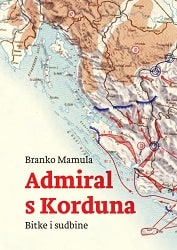
Nakon što sam pročitao zapise admirala Branka Mamule, nametnula su mi se dva ključna dojma. Prvi se dojam ticao činjenice da je u jednoj ratnoj partizanskoj biografiji bilo moguće učešće u epopeji Petrove gore u proljeće 1942. i, ne mnogo vremena zatim, učešće u pomorskoj partiji šaha u zadarskom arhipelagu i na Kvarneru, posljednjih godinu dana Drugog svjetskog rata. Kordunaški momak, koji nikad nije vidio more i koji nije znao plivati, dvadeset ratnih mjeseci bio je učesnik danas prilično zaboravljene savezničke borbe na sjevernom Jadranu, koja se pretvorila u pobjedničku stratešku igru. Drugi dojam ticao se činjenice da je taj kordunaški momak, svjedok dvaju stoljeća – naš suvremenik. [...]
More...